Abstract
Guinea pigs were examined as a possible in vivo model for human histoplasmosis. Guinea pigs were exposed to an aerosol of viable microconidia and mycelial fragments of Histoplasma capsulatum generated in a Henderson apparatus. Colonization and infection of the lungs occurred, with subsequent involvement of the regional lymph nodes and reticuloendothelial organs. Cultural recovery of the fungus from the nasopharynx and bronchoalveoli was initially high, but decreased with time. The mean number of colonies recovered from the lungs gradually increased, reaching a peak at 2 weeks, with involvement of the regional lymph nodes. Extrathoracic dissemination to the liver and spleen occurred in only a few animals. After 4 weeks, all tissues except the cervical and tracheobronchial lymph nodes were culturally negative; all specimens were culturally negative after 8 weeks. Disappearance of H. capsulatum from tissues appeared to correlate inversely with the development of hypersensitivity as measured by skin test reactivity. Histopathological studies supported cultural results and were similar to those described for primary human and canine histoplasmosis.
Full text
PDF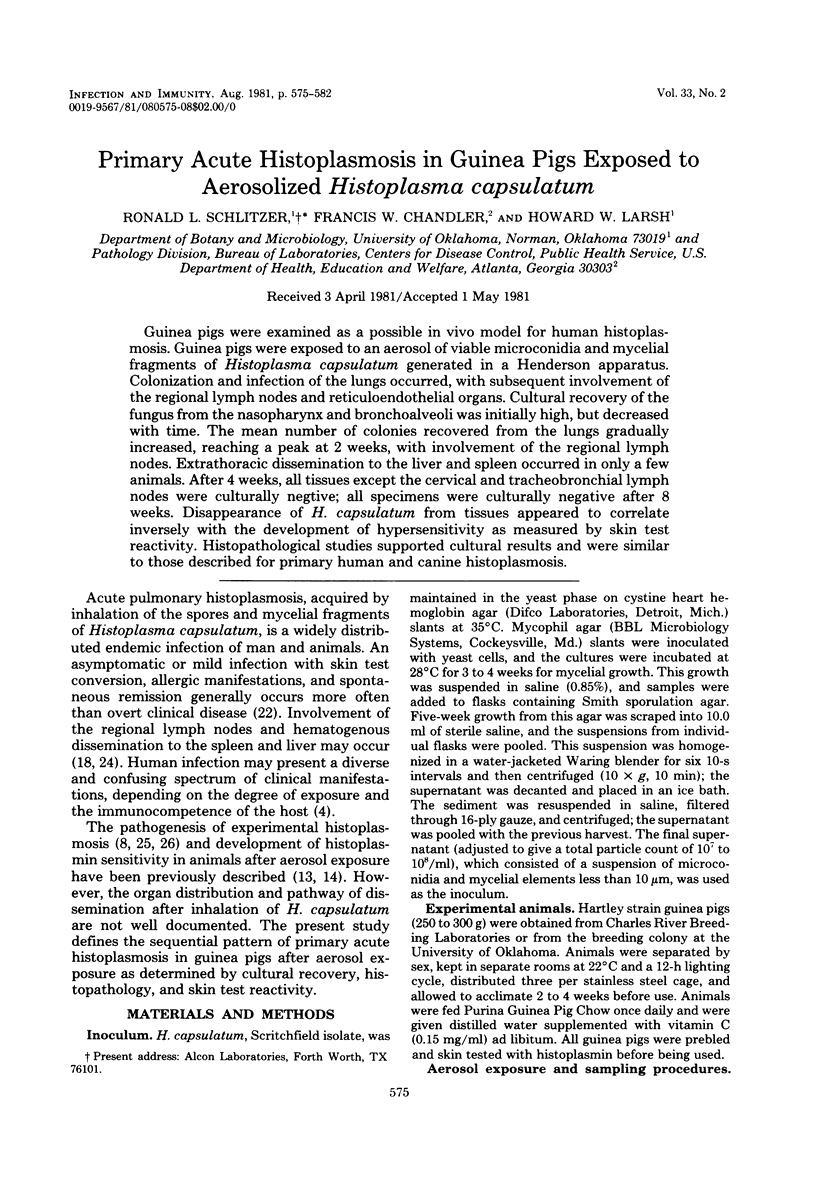
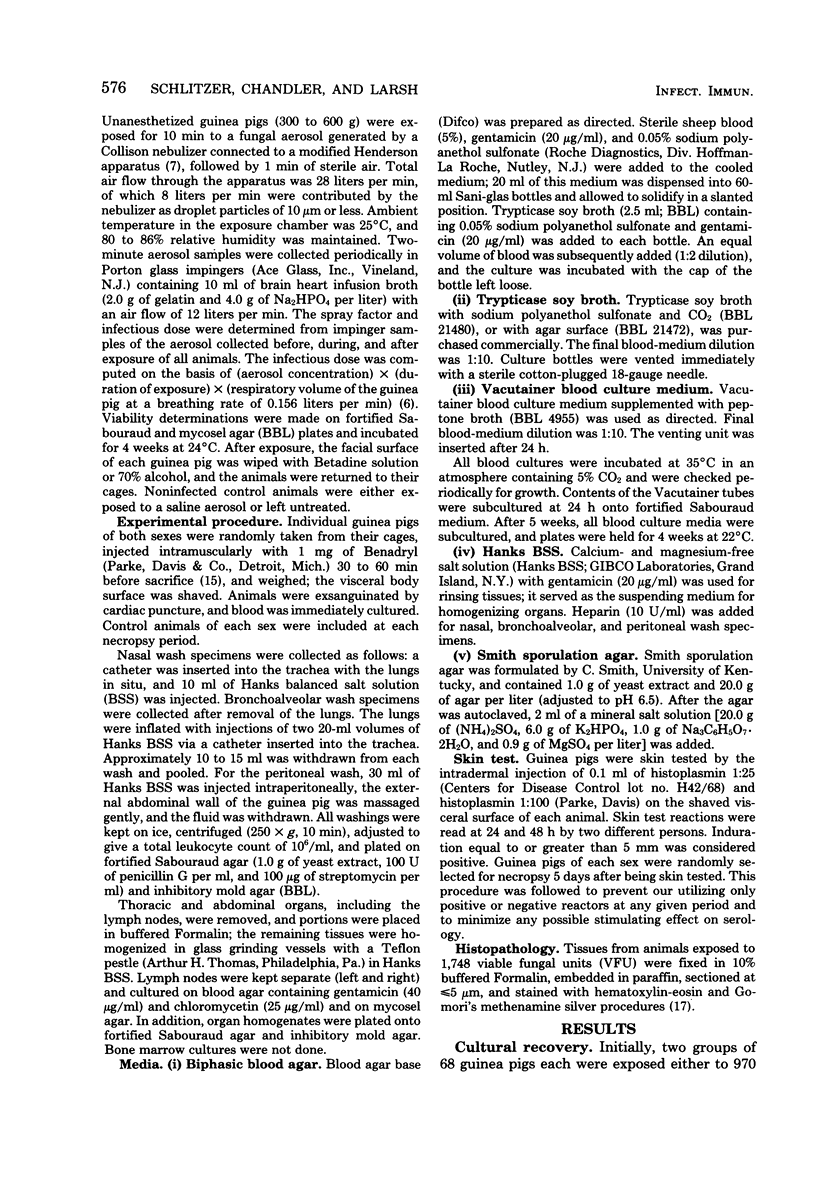
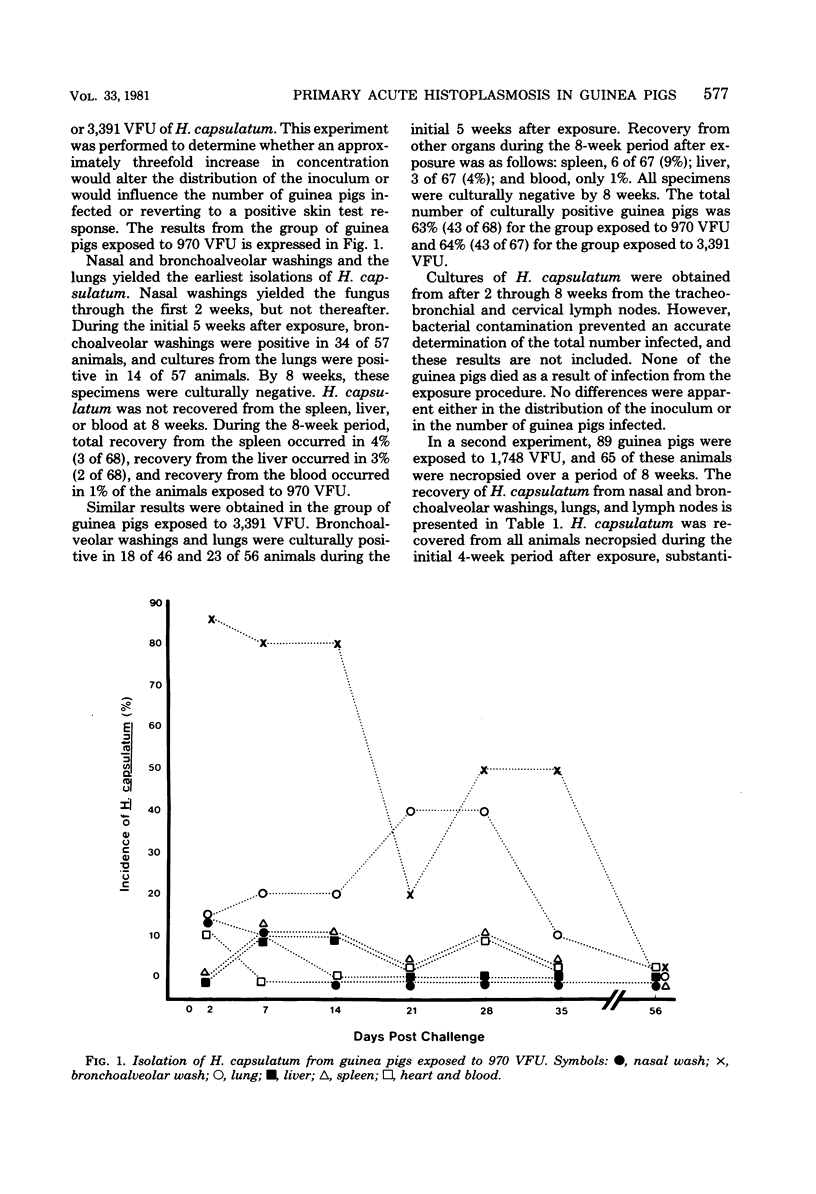
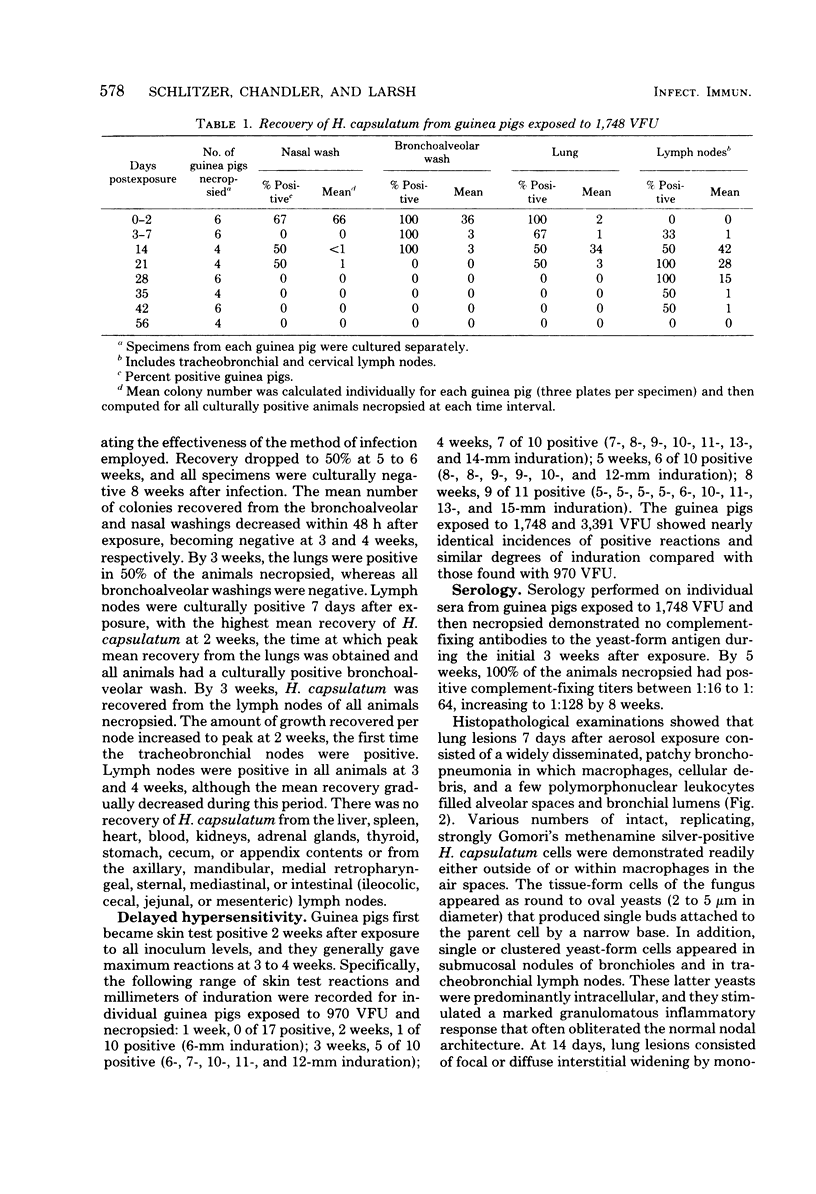
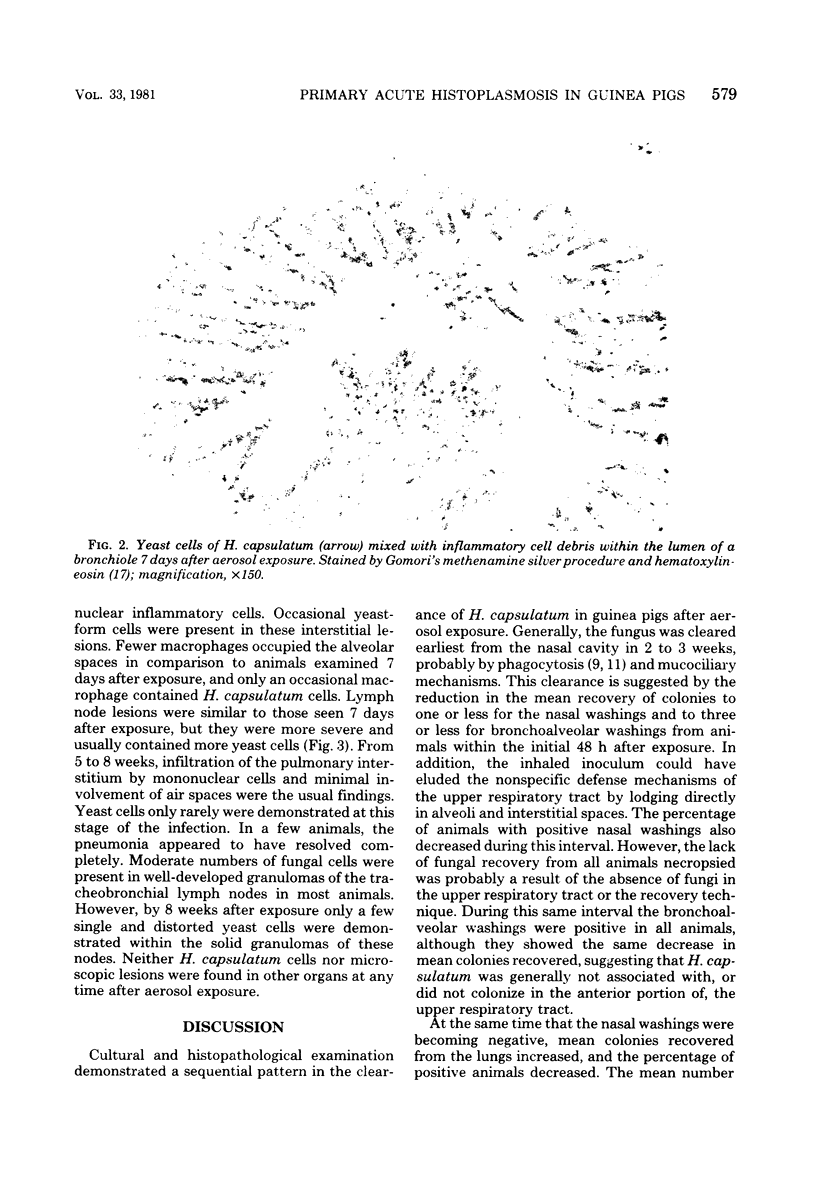
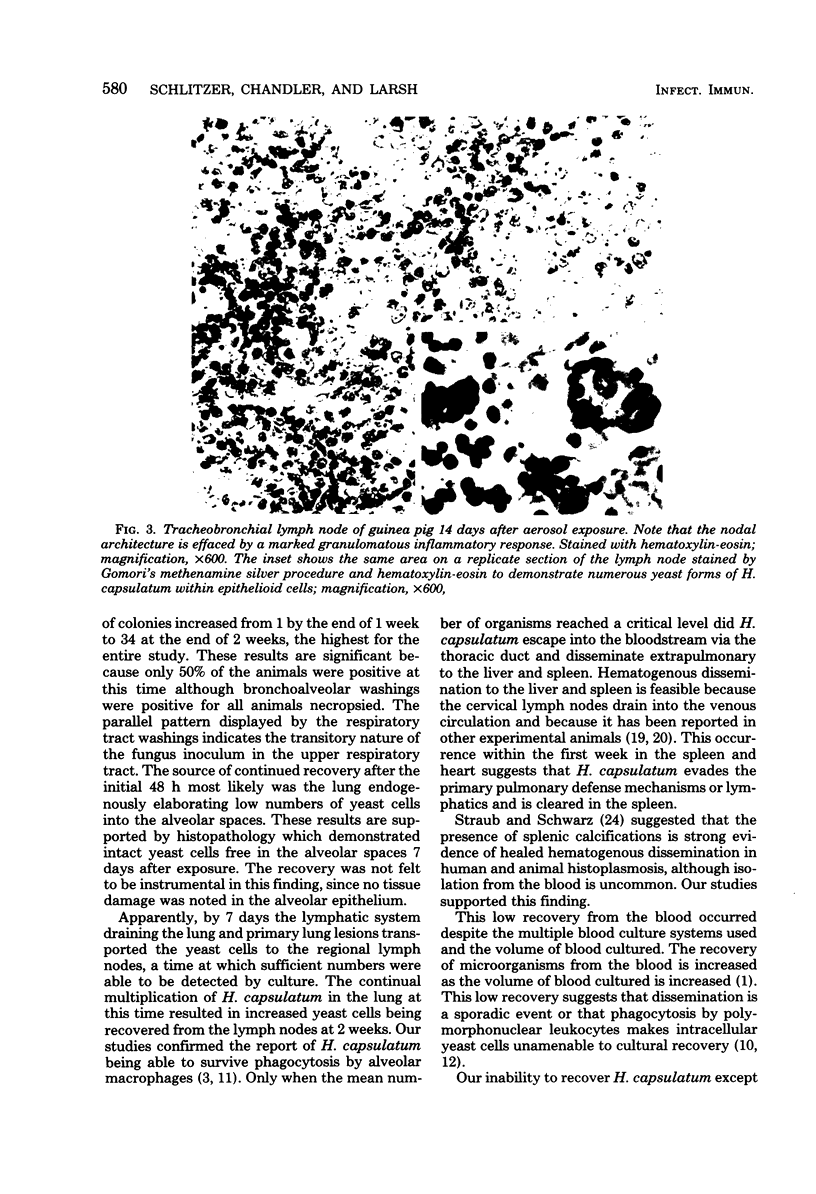
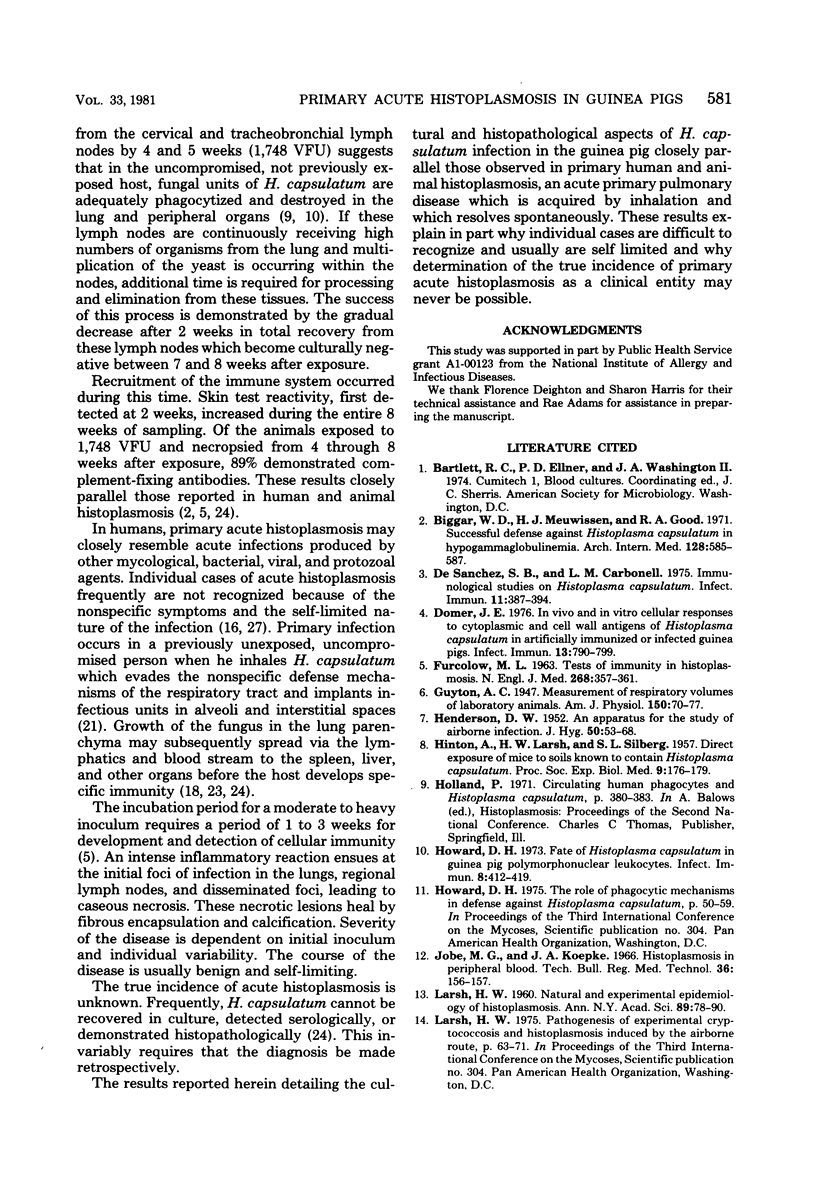
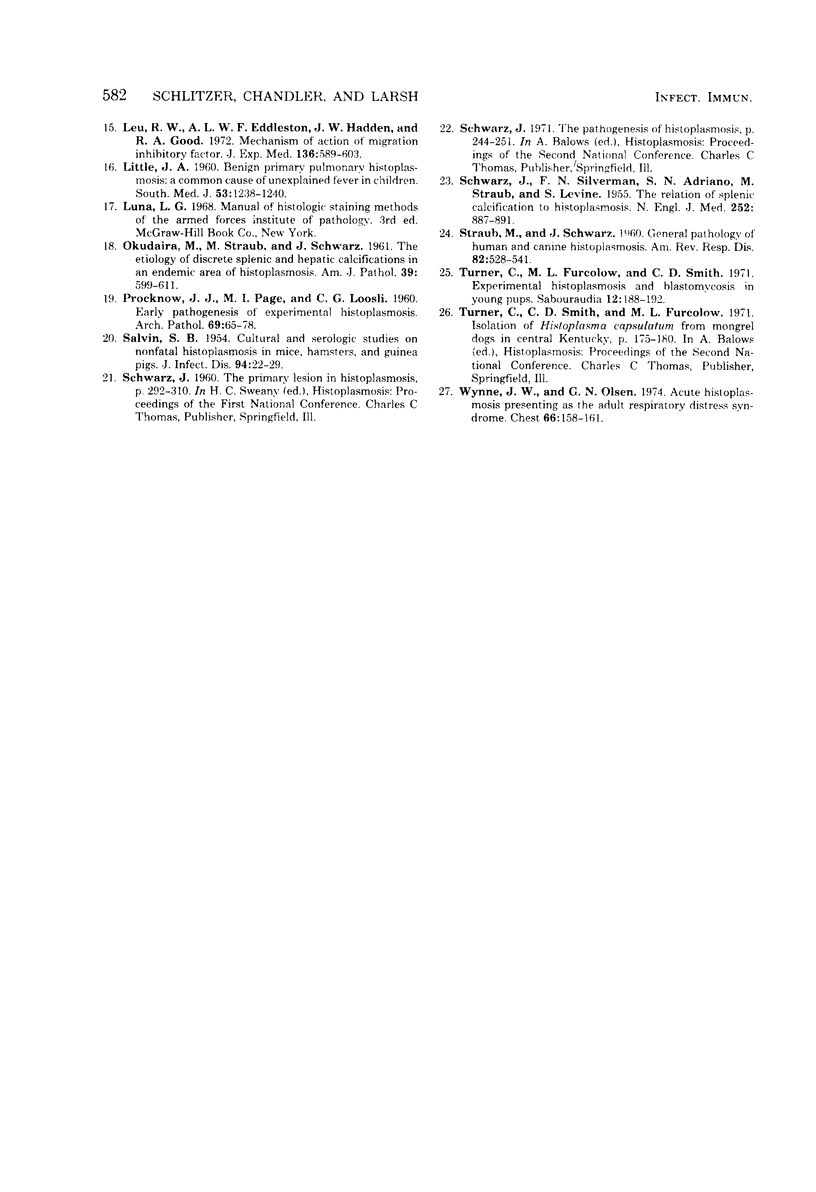
Images in this article
Selected References
These references are in PubMed. This may not be the complete list of references from this article.
- Biggar W. D., Meuwissen H. J., Good R. A. Successful defense against Histoplasma capsulatum in hypogammaglobulinemia. Arch Intern Med. 1971 Oct;128(4):585–587. [PubMed] [Google Scholar]
- De Sanchez S. B., Carbonell L. M. Immunological studies on Histoplasma capsulatum. Infect Immun. 1975 Feb;11(2):387–394. doi: 10.1128/iai.11.2.387-394.1975. [DOI] [PMC free article] [PubMed] [Google Scholar]
- Domer J. E. In vivo and in virto cellular responses to cytoplasmic and cell wall antigens of Histoplasma capsulatum in artificially immunized or infected guinea pigs. Infect Immun. 1976 Mar;13(3):790–799. doi: 10.1128/iai.13.3.790-799.1976. [DOI] [PMC free article] [PubMed] [Google Scholar]
- FURCOLOW M. L. Tests of immunity in histoplasmosis. N Engl J Med. 1963 Feb 14;268:357–361. doi: 10.1056/NEJM196302142680706. [DOI] [PubMed] [Google Scholar]
- HENDERSON D. W. An apparatus for the study of airborne infection. J Hyg (Lond) 1952 Mar;50(1):53–68. doi: 10.1017/s0022172400019422. [DOI] [PMC free article] [PubMed] [Google Scholar]
- HINTON A., LARSH H. W., SILBERG S. L. Direct exposure of mice to soils known to contain Histoplasma capsulatum. Proc Soc Exp Biol Med. 1957 Jan;94(1):176–179. doi: 10.3181/00379727-94-22890. [DOI] [PubMed] [Google Scholar]
- Howard D. H. Fate of Histoplasma capsulatum in guinea pig polymorphonuclear leukocytes. Infect Immun. 1973 Sep;8(3):412–419. doi: 10.1128/iai.8.3.412-419.1973. [DOI] [PMC free article] [PubMed] [Google Scholar]
- Jobe M. G., Koepke J. A. Histoplasmosis in peripheral blood. Tech Bull Regist Med Technol. 1966 Jun;36(6):156–157. [PubMed] [Google Scholar]
- LITTLE J. A. Benign primary pulmonary histoplasmosis: a common cause of unexplained fever in children. South Med J. 1960 Oct;53:1238–1240. doi: 10.1097/00007611-196010000-00007. [DOI] [PubMed] [Google Scholar]
- Leu R. W., Eddleston A. L., Hadden J. W., Good R. A. Mechanism of action of migration inhibitory factor (MIF). I. Evidence for a receptor for MIF present on the peritoneal macrophage but not on the alveolar macrophage. J Exp Med. 1972 Sep 1;136(3):589–603. doi: 10.1084/jem.136.3.589. [DOI] [PMC free article] [PubMed] [Google Scholar]
- Okudaira M., Straub M., Schwarz J. The Etiology of Discrete Splenic and Hepatic Calcifications in an Endemic Area of Histoplasmosis. Am J Pathol. 1961 Nov;39(5):599–611. [PMC free article] [PubMed] [Google Scholar]
- SALVIN S. B. Cultural and serologic studies on nonfatal histoplasmosis in mice, hamsters, and guinea pigs. J Infect Dis. 1954 Jan-Feb;94(1):22–29. doi: 10.1093/infdis/94.1.22. [DOI] [PubMed] [Google Scholar]
- SCHWARZ J., SILVERMAN F. N., ADRIANO S. M., STRAUB M., LEVINE S. The relation of splenic calcification to histoplasmosis. N Engl J Med. 1955 May 26;252(21):887–891. doi: 10.1056/NEJM195505262522102. [DOI] [PubMed] [Google Scholar]
- Turner C., Furcolow M. L., Smith C. D. Experimental histoplasmosis and blastomycosis in young pups. Sabouraudia. 1974 Jul;12(2):188–192. doi: 10.1080/00362177485380261. [DOI] [PubMed] [Google Scholar]
- Wynne J. W., Olsen G. N. Acute histoplasmosis presenting as the adult respiratory distress syndrome. Chest. 1974 Aug;66(2):158–161. doi: 10.1378/chest.66.2.158. [DOI] [PubMed] [Google Scholar]




